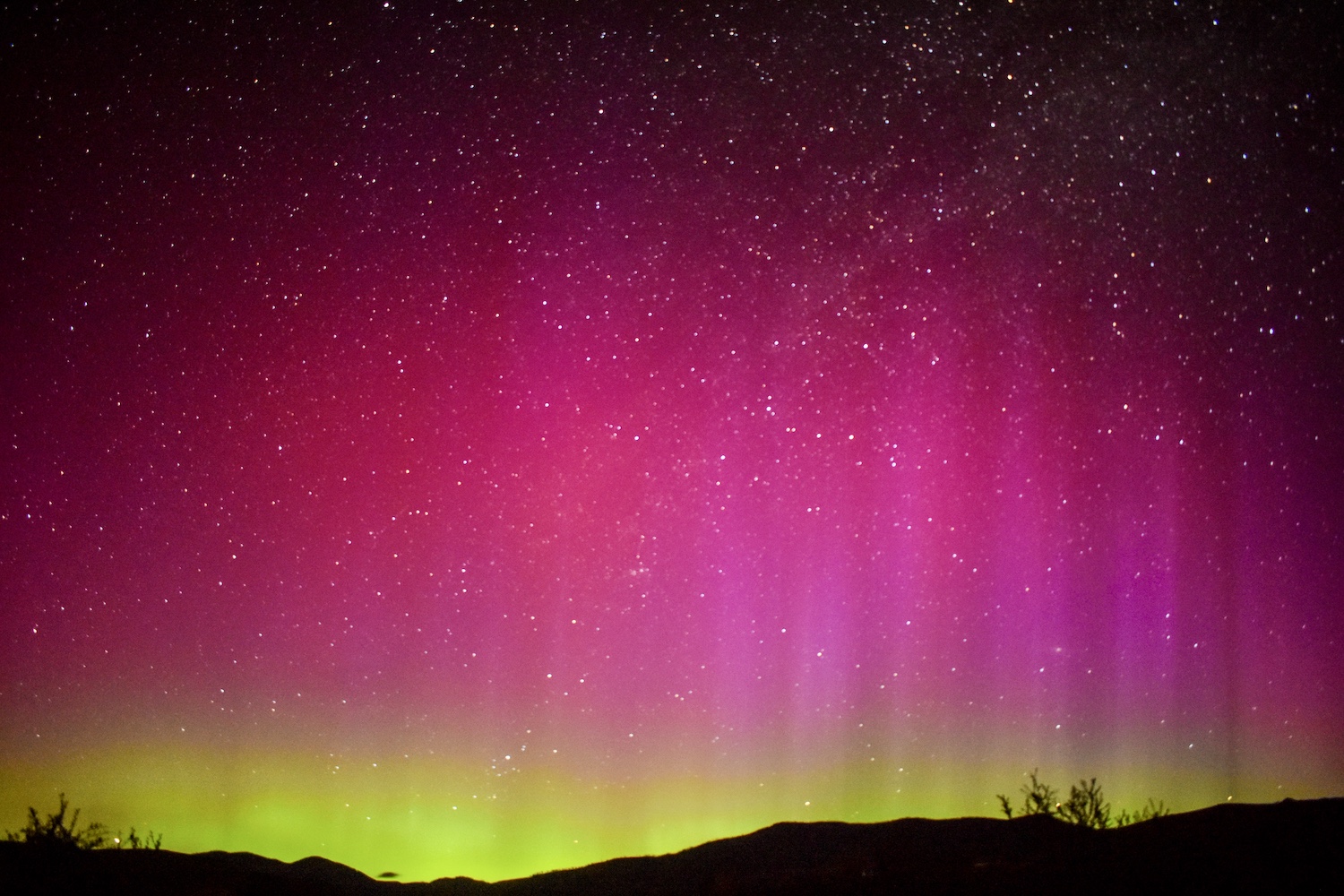Updated: May 10, 2024.
I’ve received a lot of questions from friends about how best to view the northern lights and with another possible strong geomagnetic storm this weekend, I figured I’d update this article and reshare with some updated information.
While I’ve learned a thing or two over many years of marveling at our night skies, there are no guarantees when it comes to seeing or photographing the very elusive and unpredictable northern lights. Read on for a little information on the northern lights, our current sun cycle, and some tips and tricks for seeing this beautiful and surreal natural phenomenon.
The Sun is Stirring. A short geek out on how the sun creates our northern lights.
The Sun constantly cycles through active and quiet periods but every 11 years or so, the Sun’s magnetic pole flips, transitioning into an active and stormy phase called a solar maximum. The many sunspots and flares effect space weather and can impact the power grid, black out radio communications, and cause satellite orbital decay.
An organization called the Solar Prediction Panel, co-sponsored by NASA and NOAA (National Oceanic and Atmospheric Administration), monitors the sun and evaluates solar activity. Currently the sun is in Solar Cycle 25, which is estimated to peak sometime between November 2024 and March 2026. Of course that’s just an educated guess. No one knows for sure when the sun will peak in this cycle.
So what does this sun cycle mean for us?
As we approach this solar maximum, those of us who live at more northerly latitudes with dark skies are more likely to see increased aurora activity. It’s a good time to be an aurora hunter!
Great, so when will the aurora be out?
That’s the million dollar question!
I can’t tell you how many times I’ve sat outside for hours during a hyped up aurora forecast only to walk away empty-handed and disappointed. Of course, gazing at the beautiful night sky is never wasted time in my opinion. Other times I’ve glanced outside on a whim and been treated to a surprise show, which is what happened in the wee early hours of February 15, 2023 just a few nights ago.
The northern lights depend on a favorable solar weather forecast and also the right atmospheric conditions. They require a clear, dark, ideally moonless sky, a northerly latitude, and a lot of patience. They’re better viewed in fall, winter, and spring, thanks to longer hours of darkness. For those of us who call the beautiful Methow Valley our home, we’re blessed to have several of the very necessary ingredients.
Northern lights are difficult to predict and short-term forecasts are only available for the next 30 minutes. You have to be committed to fail a lot but if you do manage to see them, you’ll never forget the experience.
Here’s what I do to try to catch them.
Monitor the solar weather forecast.
- The short-term forecast provided by the Geophysical Institute will tell you how likely the northern lights are to show in your area.
- The next half hour prediction is also available on NOAA’s wonderful Space Weather Prediction Website.
- You can sign up for various aurora alerts, though I admit I’ve had mixed results. Some of the best displays I’ve seen never came with an alert. I like the Aurorasaurus site, which offers crowdsourced reporting of aurora activity.
- My go-to site is SpaceWeatherLive, which does a great job of aggregating a lot of information. They show you the “live” auroral oval, which is a visual of the possibility of aurora activity, as well as other metrics like hemispheric power, Kp index, Bz, and the odds of seeing the aurora from numerous locations in North America, Europe and Asia, and the Southern Hemisphere. If you really want to geek out, this is the spot.
Tip: Solar forecasts often use UTC for their time and can be confusing. You need to translate UTC into your local time zone. For example, if an aurora is active for Friday, February 17th 6:30am UTC, that means Thursday, February 16 10:30pm PDT. Go outside!
Ok, does the forecast look favorable? Great! Is it a dark, clear night? Awesome!
Check the Yellowknife, Canada AuroraMax camera.
The Canadian Space Agency offers a live aurora camera from Yellowknife in Canada’s Northwest Territories during fall, winter, and spring. If the forecast seems favorable, I often pull up their cam and keep an eye on it. If Yellowknife has clear conditions and no activity, it’s highly unlikely you’ll see anything at lower latitudes. If you’re seeing activity on the webcam, there’s a good possibility you may see aurora from a northern location like the Methow Valley.
Great, now what?
Find a dark, moonless sky with a big view to the north.
If you live in the Methow Valley, you’re very lucky! We have an abundance of dark skies and a northerly latitude that provides fantastic aurora viewing opportunities. I’m lucky enough to be able to shoot straight out my back door from my property in Twisp. If you’re in an area around Seattle or another city, try to find a place away from light pollution. Look for the largest unobstructed view of the north sky you can find.
Plan to watch the sky between 10pm and 2am.
Northern lights don’t work on a timeline and can be visible anytime the sky is dark or even just before sunset and sunrise, but usually between 10pm and 2am is a good window. It’s important to know that northern lights can come in 30-60 minute bursts that ebb and flow. Sometimes you may only get a small burst. Other times you can have many through the course of the evening.
Be committed.
The surging nature of the aurora means you have to be committed. I’ve been with friends who have given up and gone inside, only to miss a brilliant display 30 minutes later. Some displays will dance for hours, others only minutes. It can take a lot of commitment, patience, and sometimes blind luck to catch them. It doesn’t always end in success but if you catch those couple of minutes of dancing light pillars it’s so worth it!
Here are some commonly asked questions I’ve received.
Can I see northern lights with the naked eye?
Yes and no. What you will probably notice first is a large bright glow to the north, almost like city light pollution. Here in the Methow where it is very dark, I find the bright glow to be very noticeable.
You are most likely not going to see with the naked eye what you see in aurora photos unless you’re witnessing a significant geomagnetic storm. Large storms can create very visible pillars of moving light to the naked eye, almost like shimmering spotlights. It’s not uncommon to see tones of green and red during active storms if you give your eyes several minutes of darkness to acclimate. You’ll think your eyes are playing tricks on you and you won’t quite believe what you’re seeing. Even if you can’t see colors, the experience is fantastic!
Will I see colors?
Unless there is a large geomagnetic storm, it is highly unlikely you will see brilliant color with the naked eye unless you’re at an extremely northerly latitude (think Iceland, Northern Territories, etc) or experiencing a strong aurora display. I have seen a greens and reds during larger storms and once many years ago witnessed an unbelievably colorful northern lights show with just my eyes from a northern spot in Canada.
How do I see the colors?
These days, most modern phone cameras will do a wonderful job of picking up the colors your eyes can’t see. I’ve taken a number of 3 second exposure photos with my old iPhone 13 that have turned out grainy but still show the colors! Make sure your flash is off, point your phone to the north, and snap away.
I took the photos below using my iPhone and while they have significantly more noise and less clarity than a good DSLR camera, they still turned out impressive and showed a lot of color!
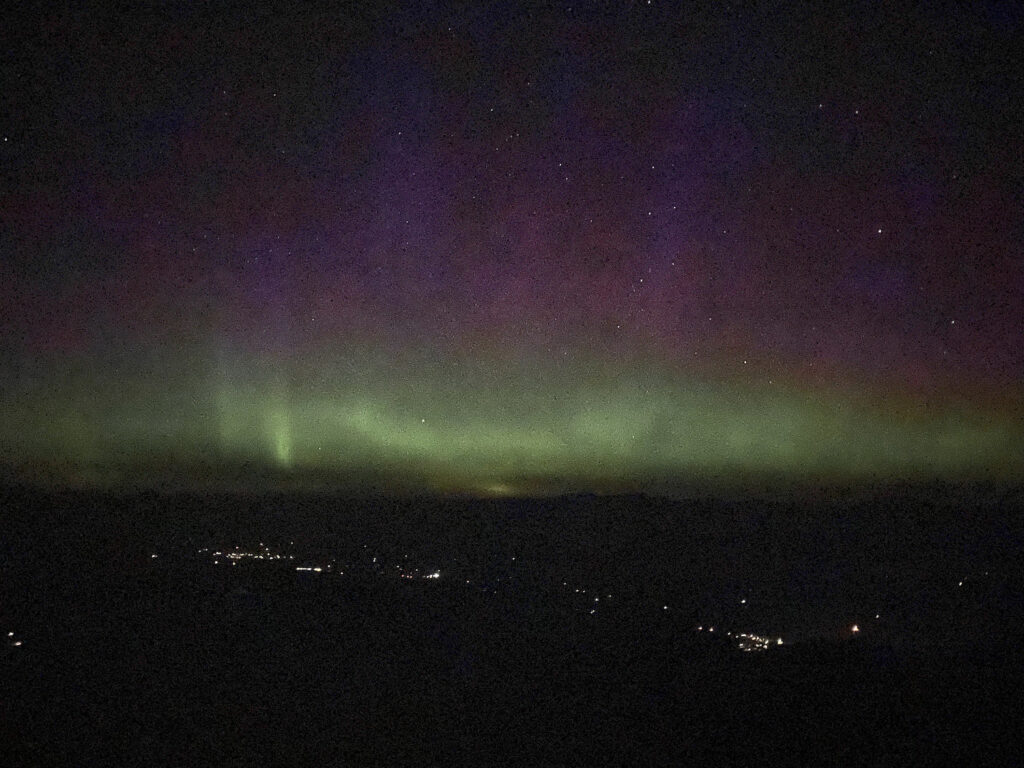
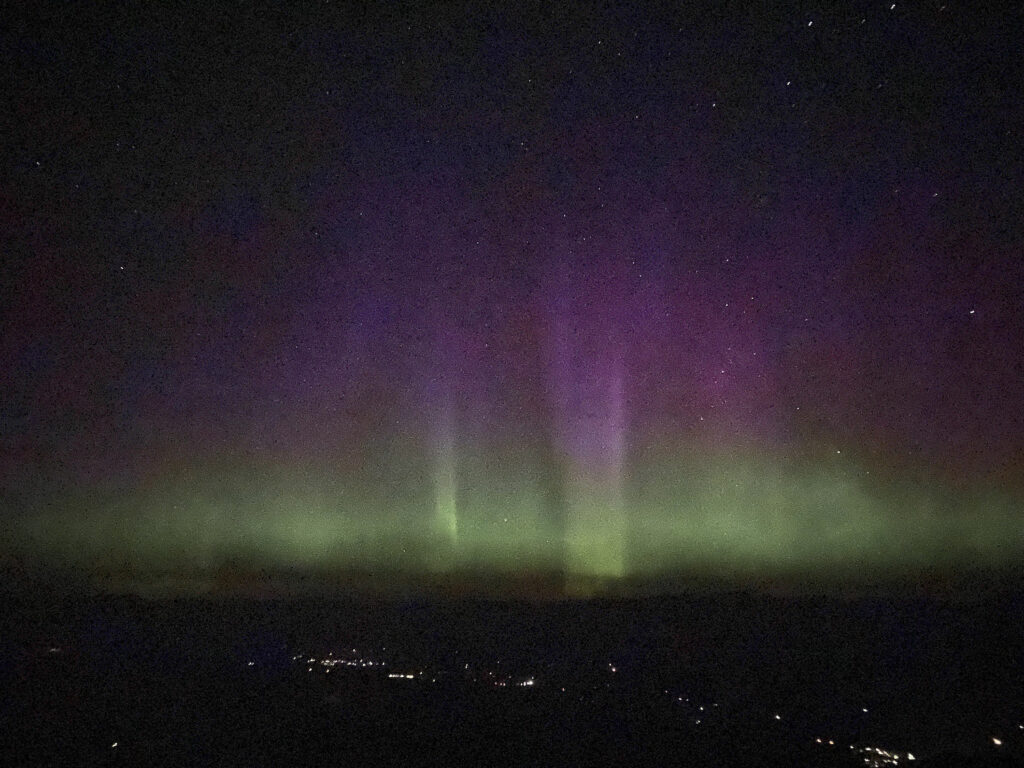
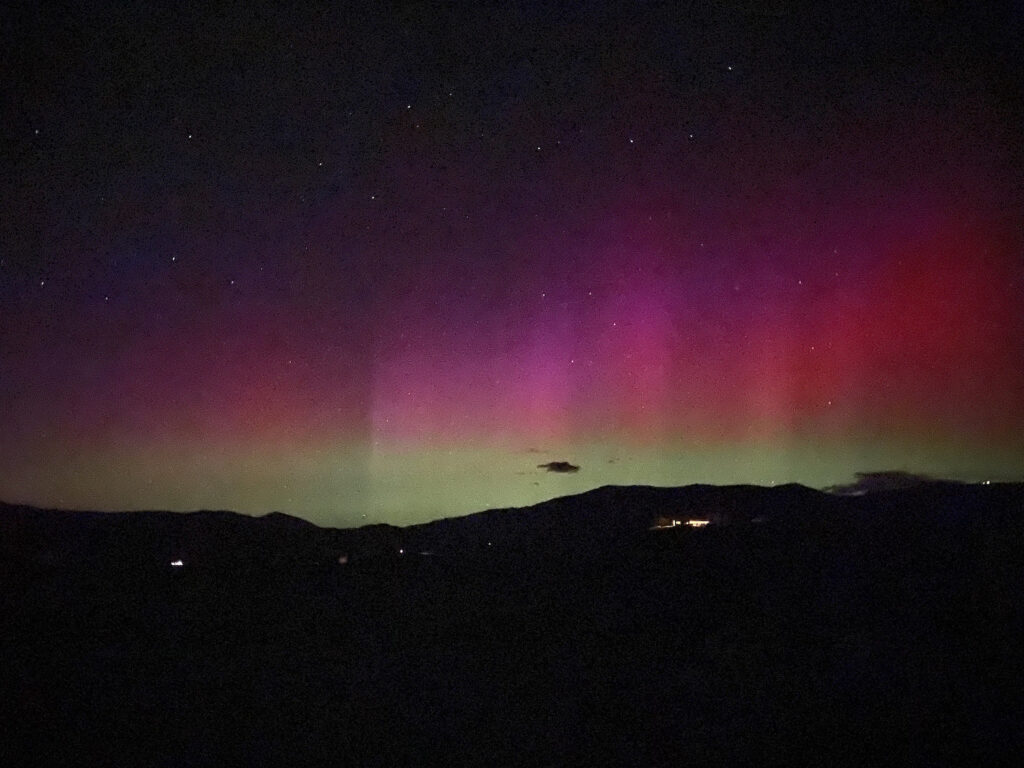
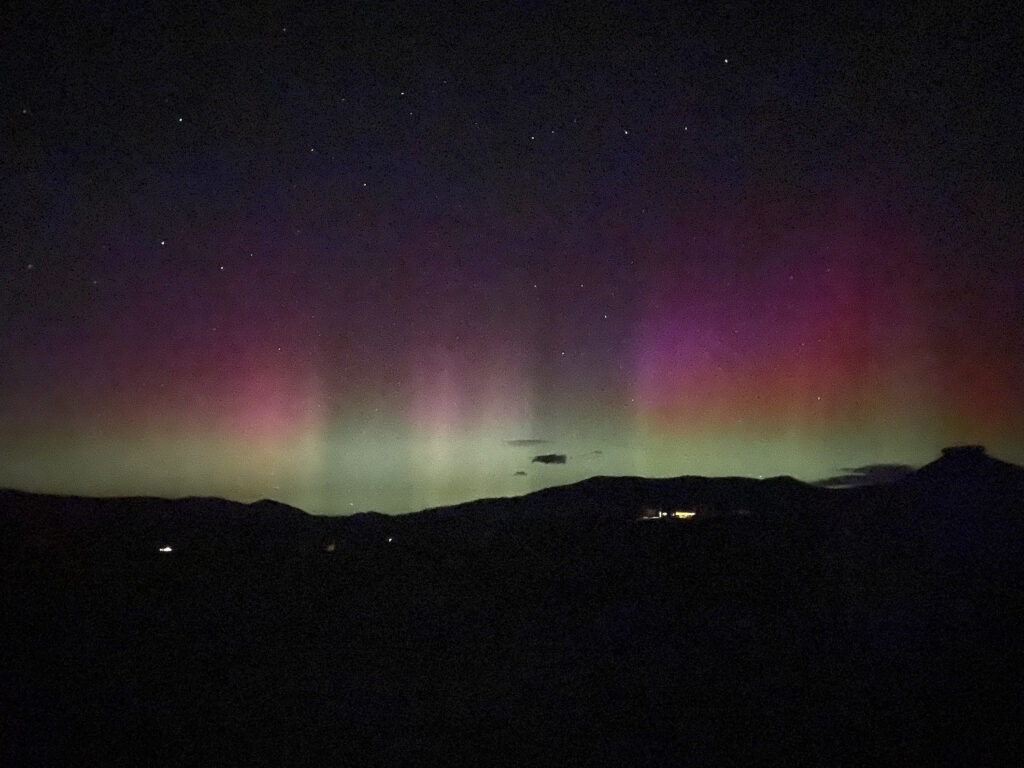
How do I photograph the aurora?
If you want better results than a phone, use a good DSLR camera on a tripod that allows you to make f-stop, ISO, and shutter settings. I use a Canon D3500 DSLR with a 10-35mm lens for a wide angle view, attached to a tripod to limit shake or vibration. Set your f-stop low to let in as much light as possible. For ISO, somewhere between 800-2500 is best. A higher ISO lets in more light but will amplify noise.
Shutter exposure takes some experimenting and is highly variable depending on what kind of effect you would like and the activity and movement of the aurora. With brighter, fast-moving displays, shorter exposures around 3-10” seconds can work very well and reveal aurora detail. Longer 10-30” exposures work well for slow moving or dimmer displays.
Here’s an example of some photos I’ve taken of northern lights activity right out my back door in Twisp, Washington. Most shots were at an 18mm focal length, f/3.5, with 8-30” exposures at 1400 ISO. It’s really incredible how much the color and intensity of the lights can change.
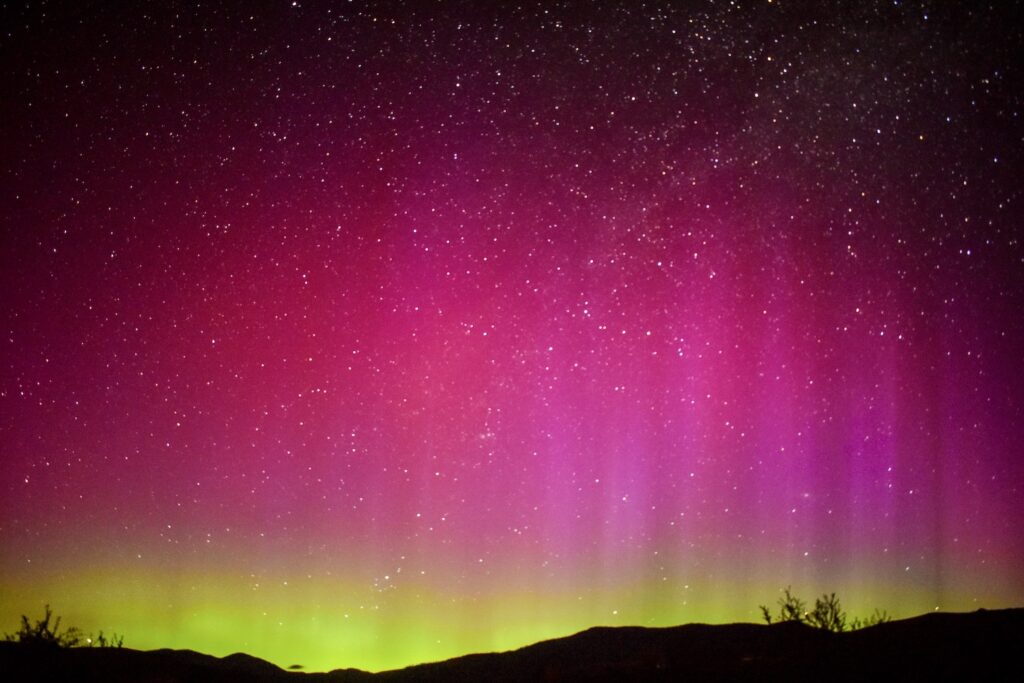
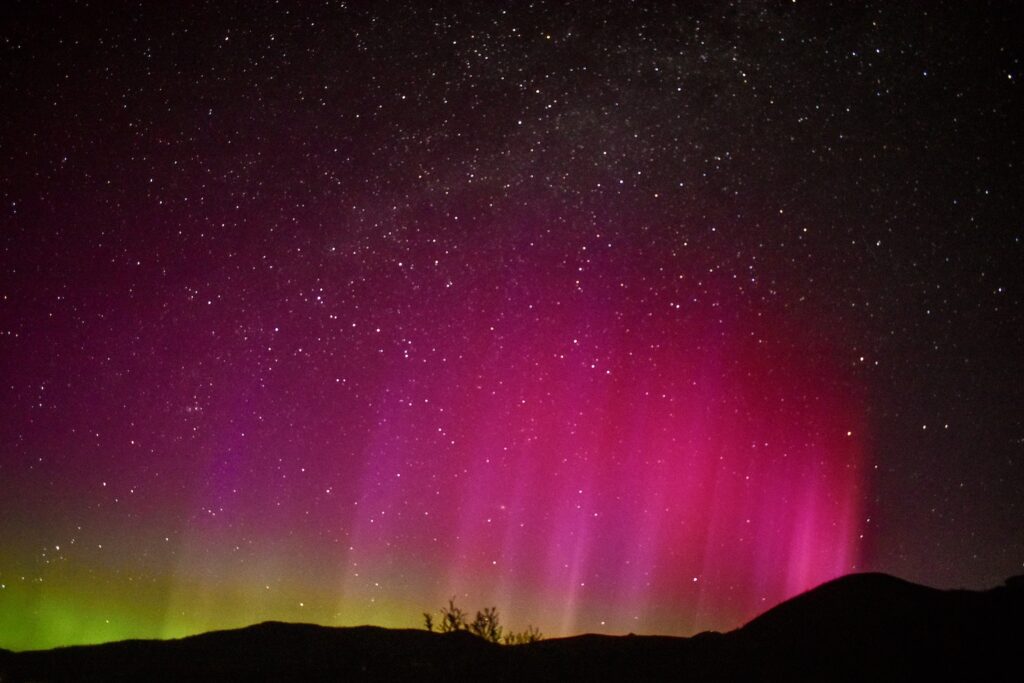
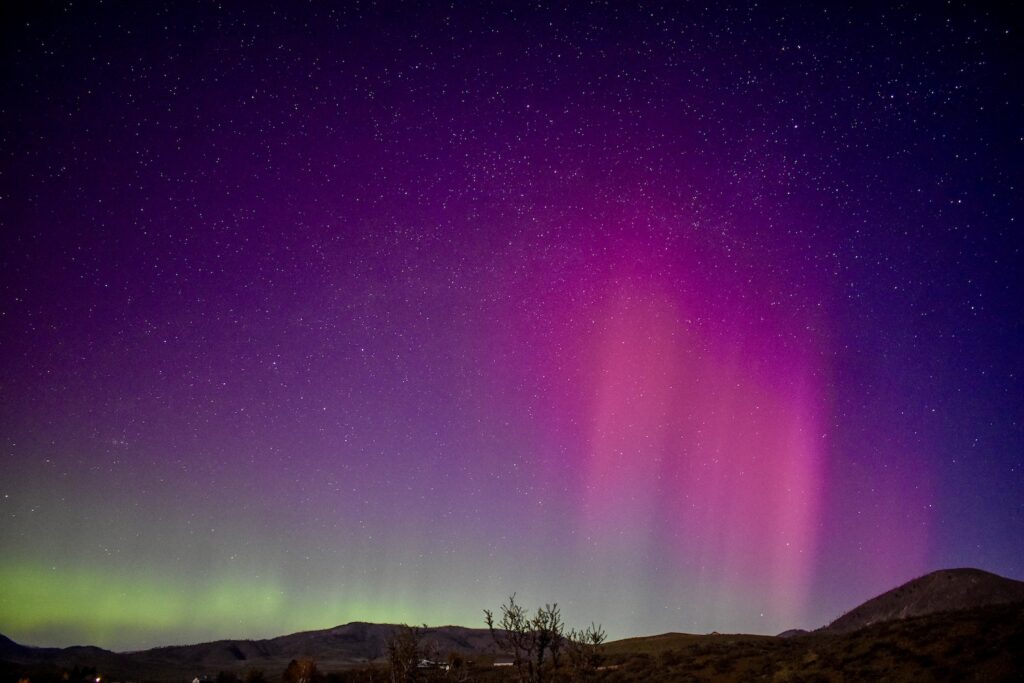
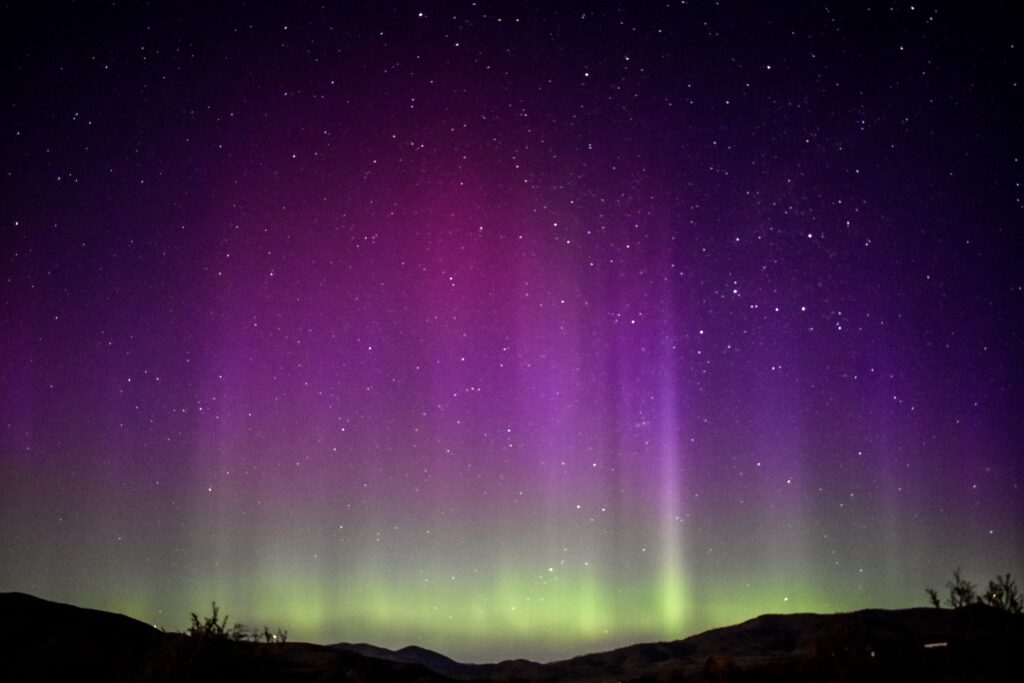
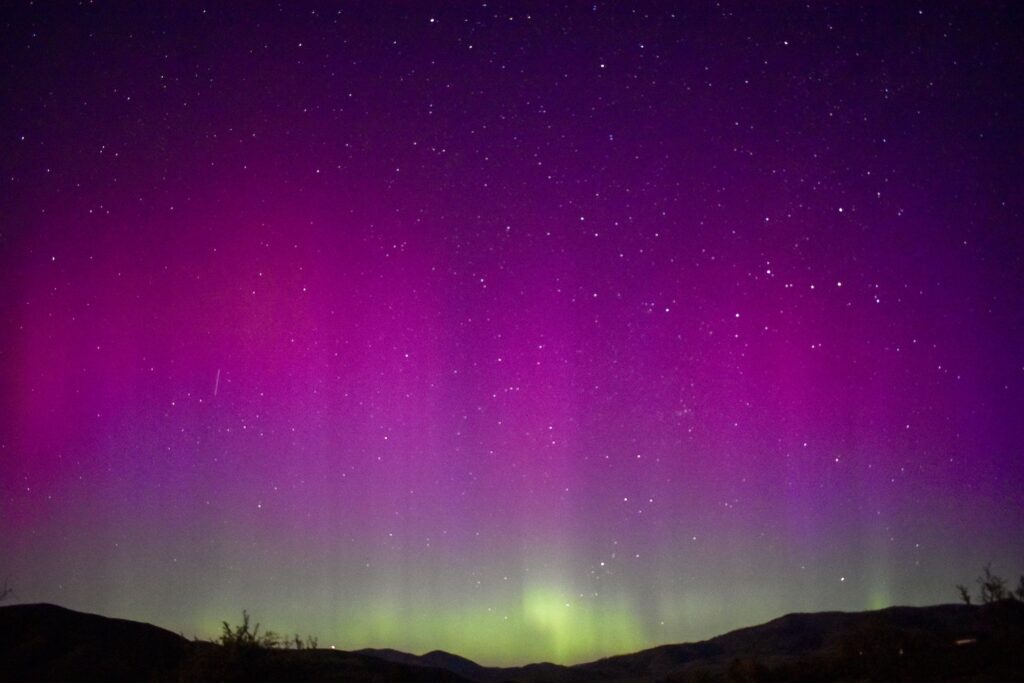
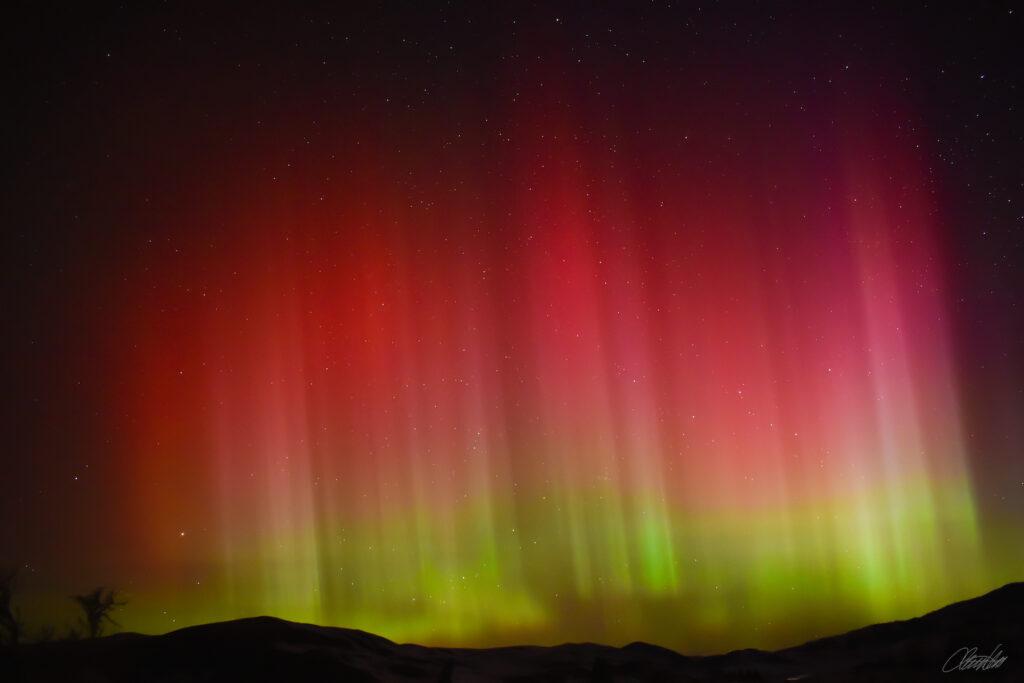
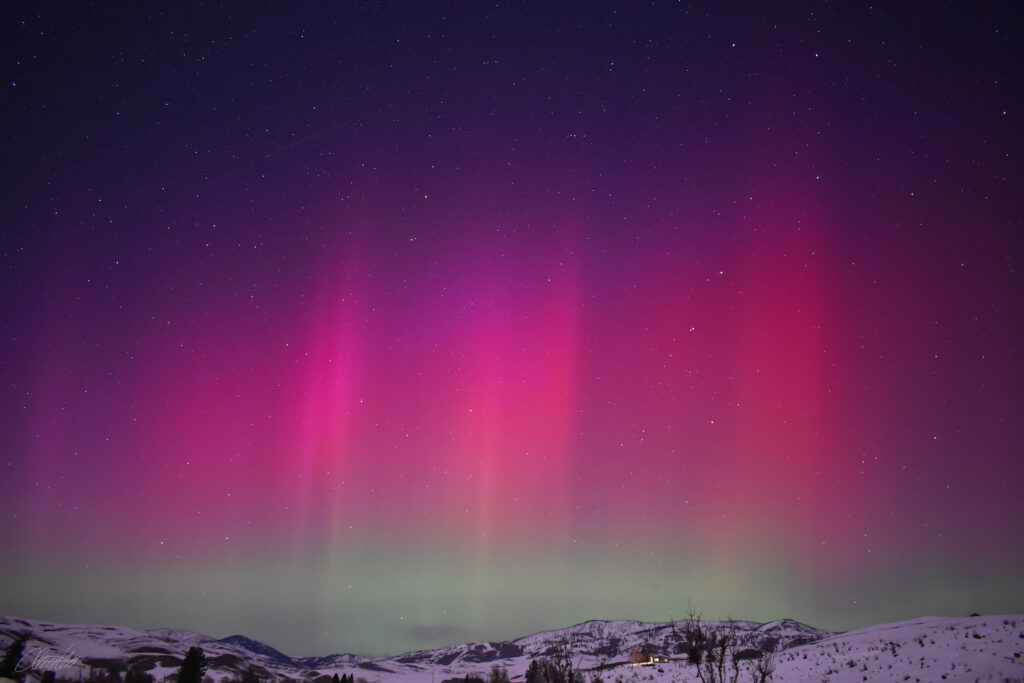
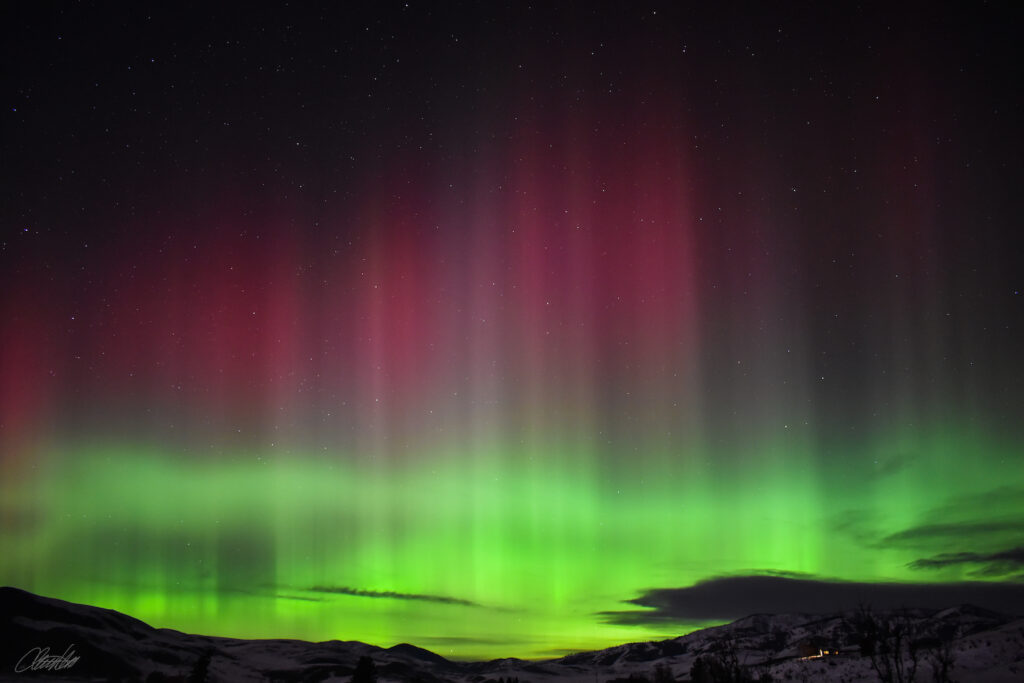
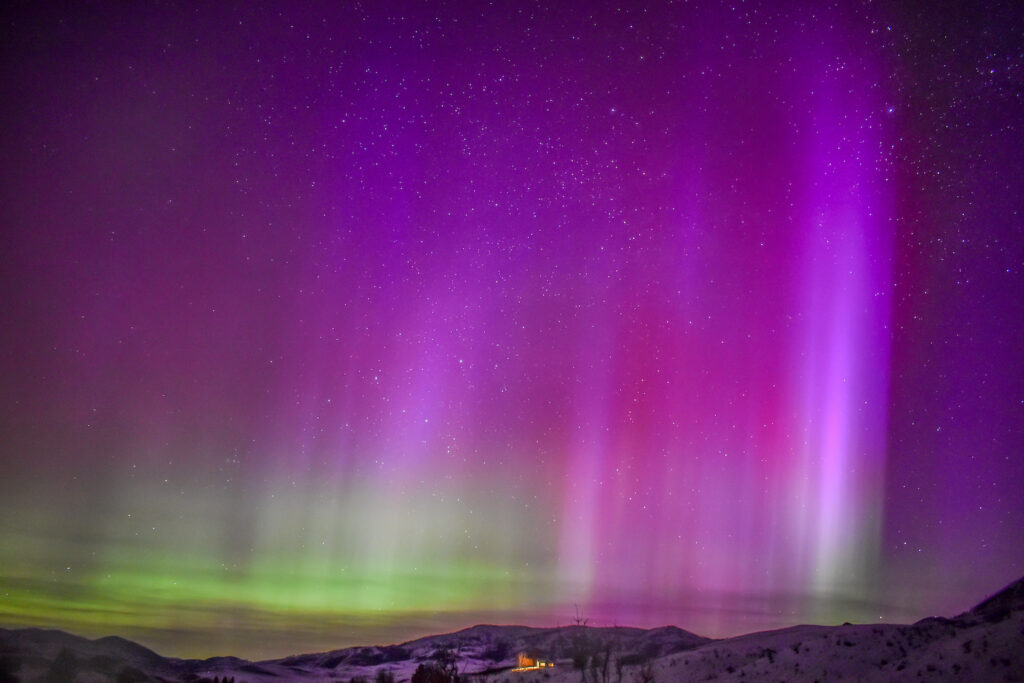
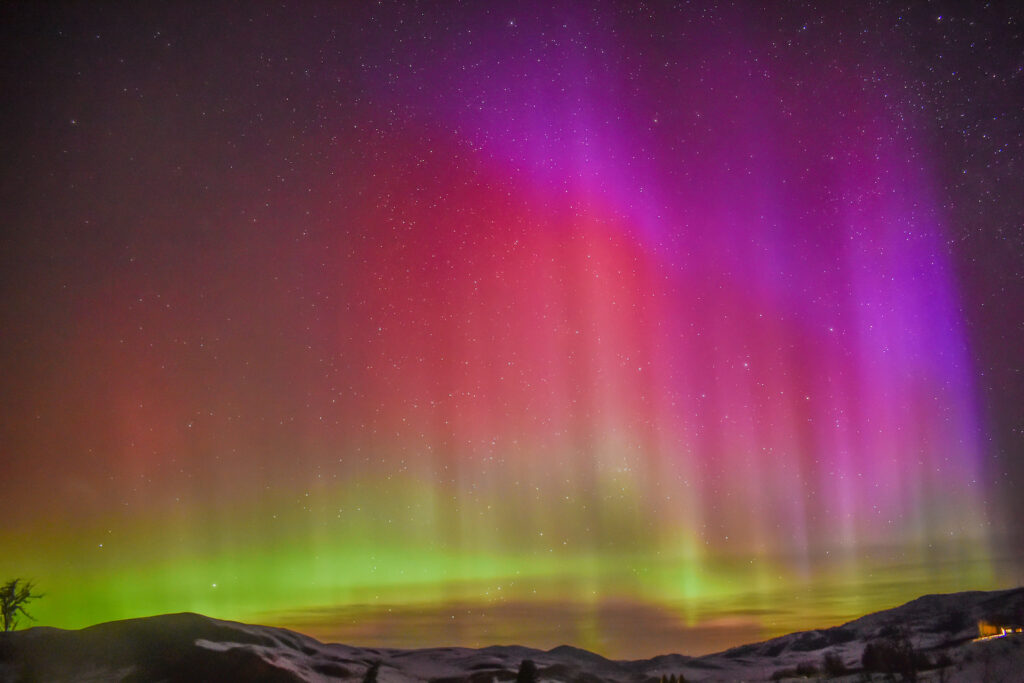
What colors can I expect?
The most common colors are red and green, but I’ve also seen bright greenish-yellow, blues, purples, and even bright pinks. The earth’s atmosphere is made up of approximately 78% nitrogen and 21% oxygen. The presence of these gases impacts the color of the aurora. Nitrogen creates blues and purples while oxygen creates greenish-yellow.
Want to get super geeky?
If you really want to dive into the science and data of auroras, there are three solar weather data points that tend to forecast a great auroral display: the Kp index, a measure of the degree of disturbance in the Earth’s magnetic field; the Bz, which measures the strength of the solar magnetic field in the north-south direction; and a visual forecast model showing the extent of the auroral oval. This great article on Sky & Telescope does a great job of diving into the geeky science for those of you so inclined.
Generally speaking, to see the aurora here in the Methow Valley, we need a negative Bz reading, a large auroral oval, and a Kp index around 4 or higher. As the Kp index rises, the aurora can become larger and more active at lower latitudes. Again, there are no hard and fast rules on aurora, but the displays we’ve had here the last two evenings in the Methow have had negative Bz readings, a high Kp index around 4 or 5, and a favorable oval.
Keep your eyes to the night skies!
With our clear weather forecast, crescent moon, and possibility of a strong G4-level geomagnetic storm around May 10-12th, I would highly recommend finding a dark spot with a good view of the north sky and taking a look outside. You may just get treated to one of nature’s most spectacular shows! Keep trying because we’re in a good time of solar activity to see the northern lights, especially before the longer days of summer arrive.
I should also take a moment to advocate for the importance of eliminating and curtailing unnecessary nighttime lighting and conserving our beautiful night skies here in the Methow Valley. I truly am so lucky to live in a dark sky community and I hope it stays that way. Check out the Methow Dark Sky Coalition for more.
Good luck and happy aurora hunting!
Aurora Resources
